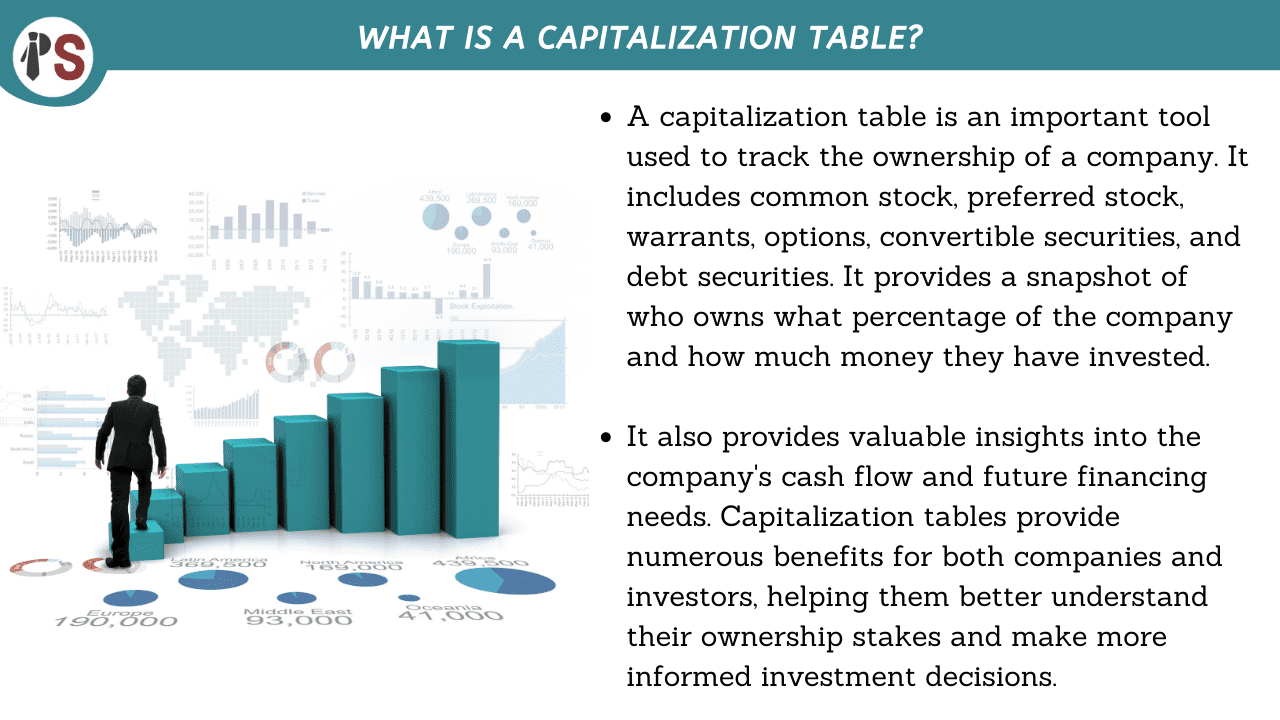
A capitalization table (or "cap table") is an important tool used in venture capital and private equity to track the ownership of a company. It summarizes the company's equity ownership, including its stockholders, equity investors, and other securities holders.
The capitalization table provides a snapshot of who owns what percentage of the company and how much money they have invested. It can also provide valuable insights into the company's cash flow and future financing needs.
A capitalization table is composed of several components:
Common Stock: Common stock represents ownership in a company. It is the most basic form of equity and is typically the first type of stock issued by a company.
Preferred Stock: Preferred stock is similar to common stock, but has certain privileges that make it more attractive to investors. These privileges often include the right to receive dividends before common stockholders and the right to have their shares redeemed before common stockholders.
Warrants: Warrants are options that give the holder the right, but not the obligation, to purchase additional shares of stock at a predetermined price. Warrants can be issued separately or along with other securities, such as preferred stock or debt securities.
Options: Options are similar to warrants, but they give the holder the right to purchase shares at a predetermined price at some point in the future. Options can be either incentive stock options (ISOs) or non-qualified stock options (NQSOs).
Convertible Securities: Convertible securities are debt or preferred stock that can be converted into common stock at a predetermined conversion rate. These securities are typically issued as part of a financing round and can be a way for a company to raise cash without having to issue new shares.
Debt Securities: Debt securities are loan agreements that require the company to make regular payments, usually with interest. These can be issued either as long-term debt or short-term debt, depending on the company's needs.
Capitalization tables provide numerous benefits for companies and investors alike. For companies, a capitalization table can help them keep track of their equity ownership and provide valuable insights into their cash flow and future financing needs.
For investors, a capitalization table can help them better understand their ownership stake in the company and make more informed investment decisions. It can also provide valuable insights into the company's financial position and future prospects.
A capitalization table is an important tool used in venture capital and private equity to track the company's equity ownership. It is composed of several components, including common stock, preferred stock, warrants, options, convertible securities, and debt securities. Capitalization tables provide numerous benefits for both companies and investors, helping them better understand their ownership stakes in the company and make more informed investment decisions.
At Professional Saathi, we offer a range of business consultancy services that help businesses improve their performance, achieve growth, and overcome challenges.
Copyright 2025 © Created By KTPG PROFESSIONAL SAATHI CORPORATE CONSULTANT PRIVATE LIMITED, All Rights Reserved.
Leave Your Comment